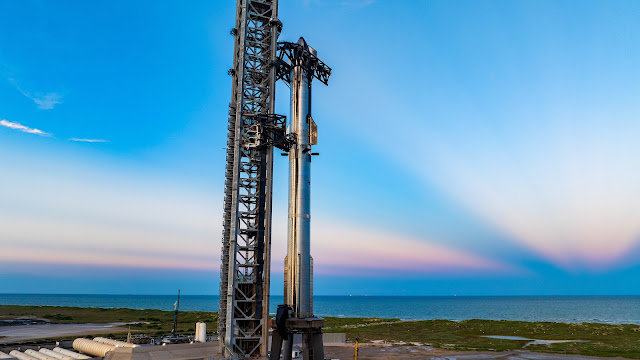NASA's SpaceX Crew-9 Mission: Launch Day | International Space Station
Roscosmos cosmonaut Aleksandr Gorbunov of Russia, left, and NASA astronaut Nick Hague, right, wearing SpaceX spacesuits, are seen as they prepare to depart the Neil A. Armstrong Operations and Checkout Building for Space Launch Complex 40 on Cape Canaveral to board the SpaceX Dragon spacecraft for the Crew-9 mission launch, Saturday, Sept. 28, 2024, at NASA’s Kennedy Space Center in Florida.
Roscosmos cosmonaut Aleksandr Gorbunov of Russia and NASA astronaut Nick Hague, wearing SpaceX spacesuits, speak with family and friends as they prepare to depart the Neil A. Armstrong Operations and Checkout Building for Space Launch Complex 40
Roscosmos cosmonaut Aleksandr Gorbunov of Russia bids farewell as he prepares to depart the Neil A. Armstrong Operations and Checkout Building for Space Launch Complex 40
NASA astronaut Nick Hague greets NASA Administrator Bill Nelson, left, and NASA Deputy Administrator Pam Melroy, second from left, prior to departing the Neil A. Armstrong Operations and Checkout Building for Space Launch Complex 40
NASA astronaut Nick Hague speaks with family as he prepares to depart the Neil A. Armstrong Operations and Checkout Building for Space Launch Complex 40
Two SpaceX Crew-9 crewmates are counting down to a Saturday launch, weather permitting, and beginning a five-month mission aboard the International Space Station.
Commander Nick Hague of NASA and Mission Specialist Aleksandr Gorbunov of Roscosmos (Russia) are at Kennedy Space Center in Florida preparing for their liftoff aboard the SpaceX Dragon spacecraft targeted for no earlier than 1:17 p.m. EDT on Saturday, September 28, 2024 after the impact of Hurricane Helene.
The duo plan to ride Dragon in low Earth orbit for a day before docking to the Harmony module’s forward port at 5:30 p.m. on Sunday. Hague and Gorbunov will open the hatch about an hour-and-a-half later and join Expedition 72 before returning to Earth in February 2025.
An international partnership of space agencies provides and operates the elements of the International Space Station (ISS). The principals are the space agencies of the United States, Russia, Europe, Japan, and Canada. The ISS has been the most politically complex space exploration program ever undertaken.
Image Credit: NASA/Keegan Barber
Image Date: Sept. 28, 2024
#NASA #Space #ISS #Science #SpaceXCrew9 #SpaceX #CrewDragonSpacecraft #Falcon9Rocket #Astronaut #NickHague #Cosmonaut #AleksandrGorbunov #Russia #Россия #Roscosmos #Роскосмос #HumanSpaceflight #InternationalCooperation #CCP #Expedition72 #KSC #CapeCanaveral #Florida #UnitedStates #STEM #Education





















































